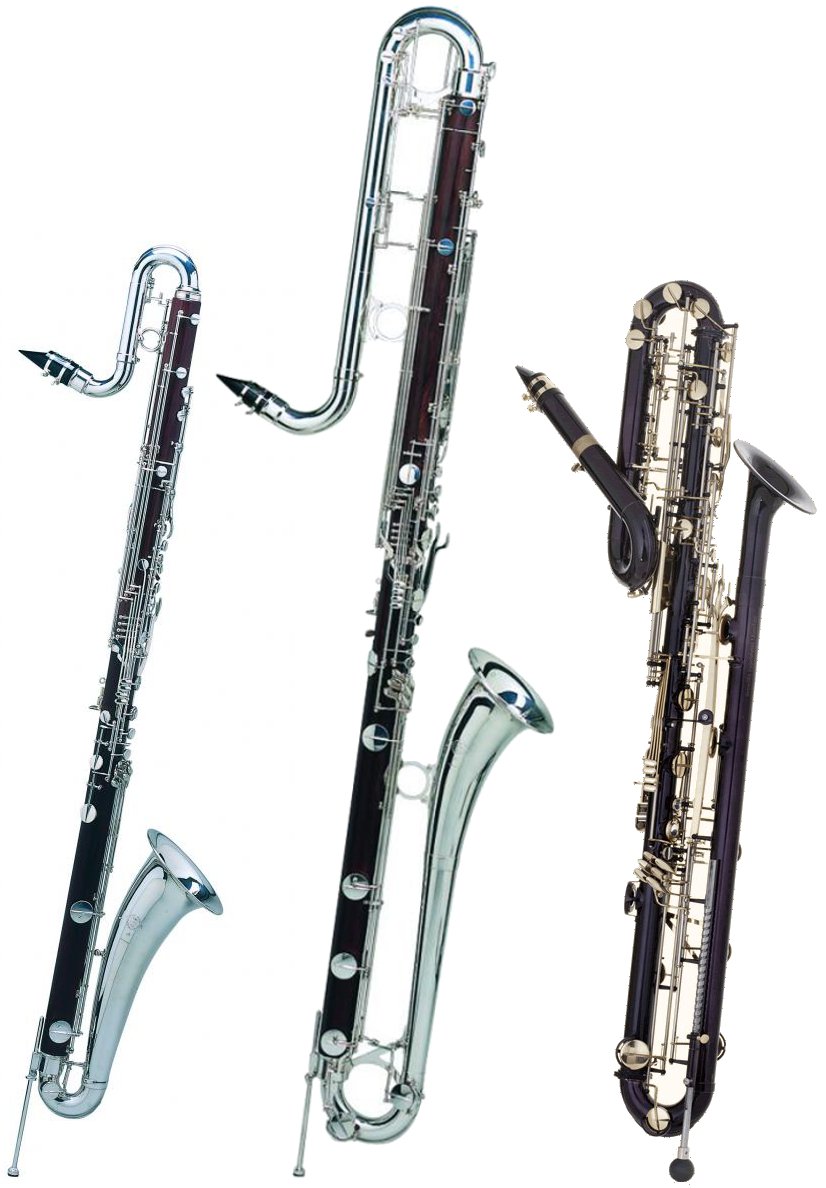Extreme depth: Contra Clarinets

The contra bass clarinet is the largest of all clarinets - about 2,70 meters in length - and not very common. Usually the composer employs this instrument for special effects. The effects are not only acoustically, contra clarinets are optically impressive, too. It's extremely deep tone is comparable to that of a string base. In modern wind band compositions you can find that part frequently.
In the USA and the Netherlands a modern version of the instrument (on the right in the picture) is often found in bigger school bands and professional ensembles. While contra bass and contra alt voices appear in compositions, the sub-contra-clarinet is rather experimental, and there are only few examples of it (personally I haven't seen one yet).
Kontra bass and kontra alto clarinet
The contra bass clarinet is noted in B flat, the Contra Alto in E flat. Often - like in US literature - the Alto instrument is referred to as Contra bass clarinet, too, but you can identify it by the key.
The instruments I played on were traditional German models on which only the lower register was really good. The higher register is often played by a bass clarinet. These instruments are, of course, expensive, and they are heavy and difficult to transport. The music shop around the corner won't have the reeds in stock. Sometimes Bass Saxophone reeds fit - plus they are much cheaper.
The traditional style instruments (on the left in the picture) look like a bass clarinet, just twice as big, with a long bent barrel and a large funnel. They are still in use today. They have keys of nearly half a meter in length. It takes big hands, a big mouth and some lung volume to play them, but basically the technique is not different from that of a normal clarinet, except that the mouth piece goes nearly horizontally.
Modern contra bass clarinets, usually Boehm systems, are bent like a bassoon, so that they are much easier to handle. You can see one on the right in the picture. They do have a small metal funnel pointing forward/upwards. Most of the instruments are completely made of metal.